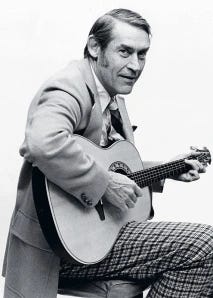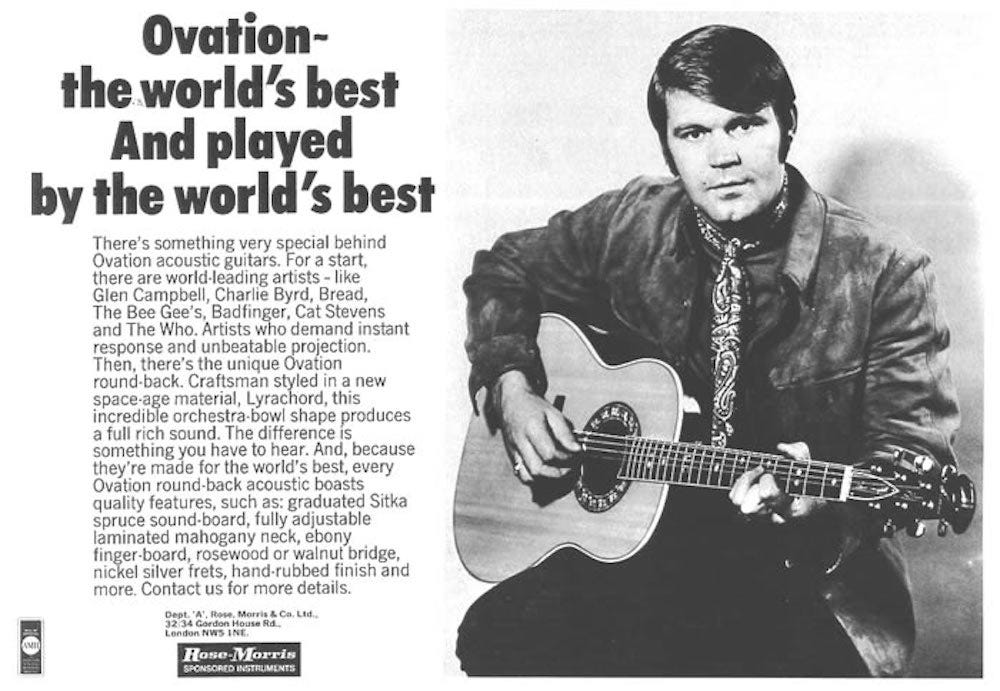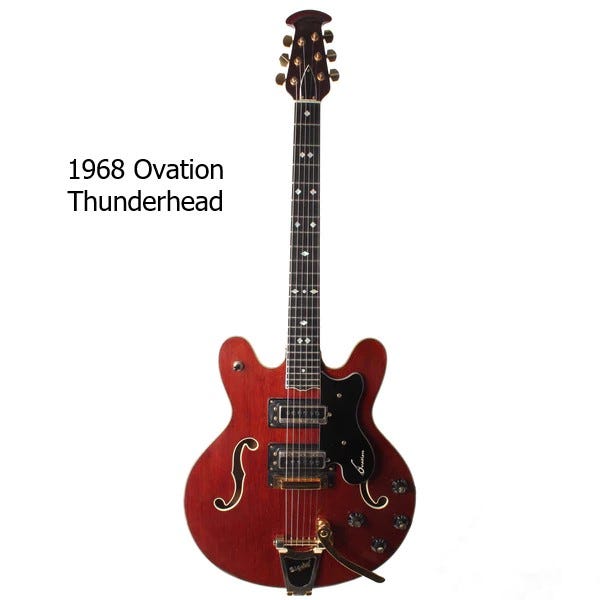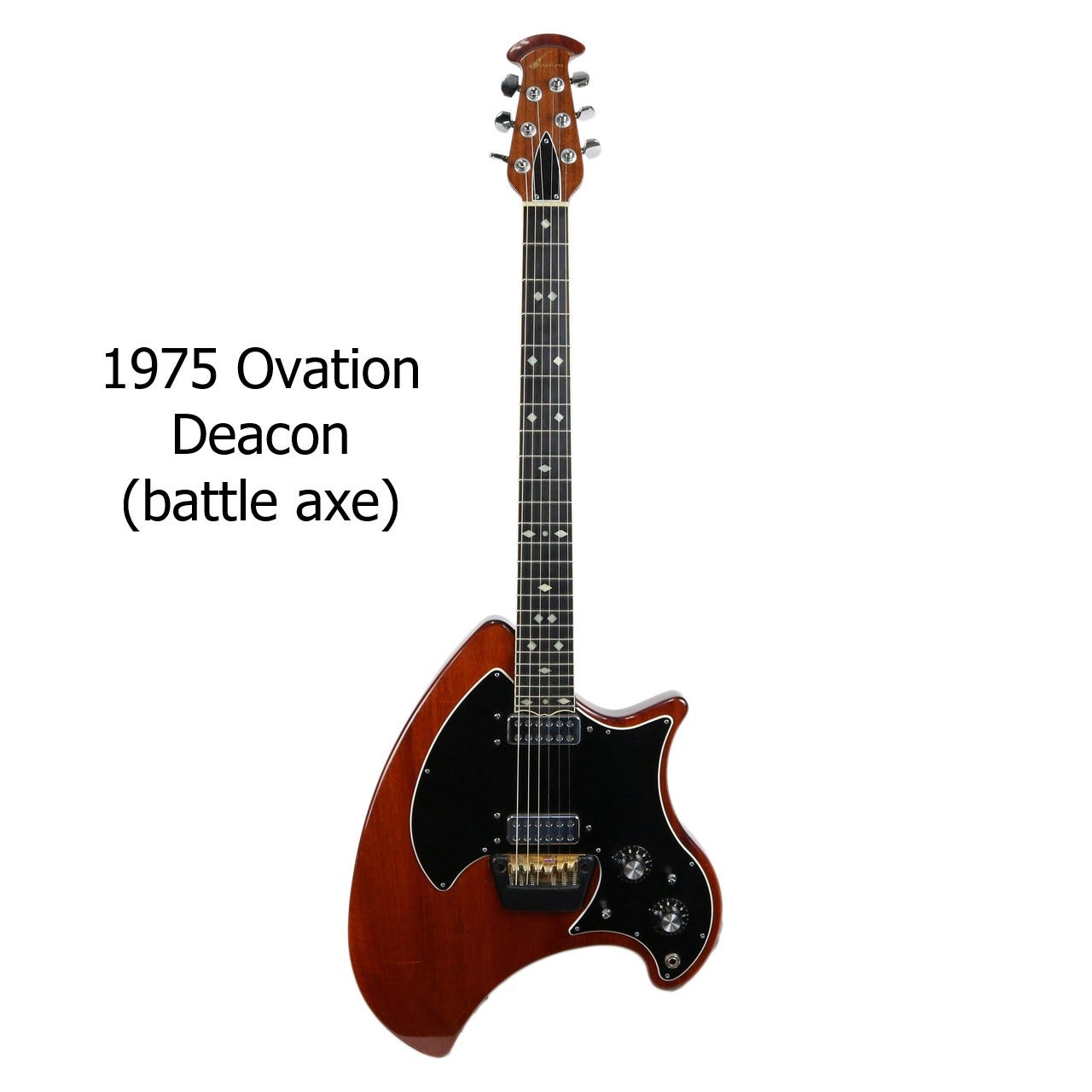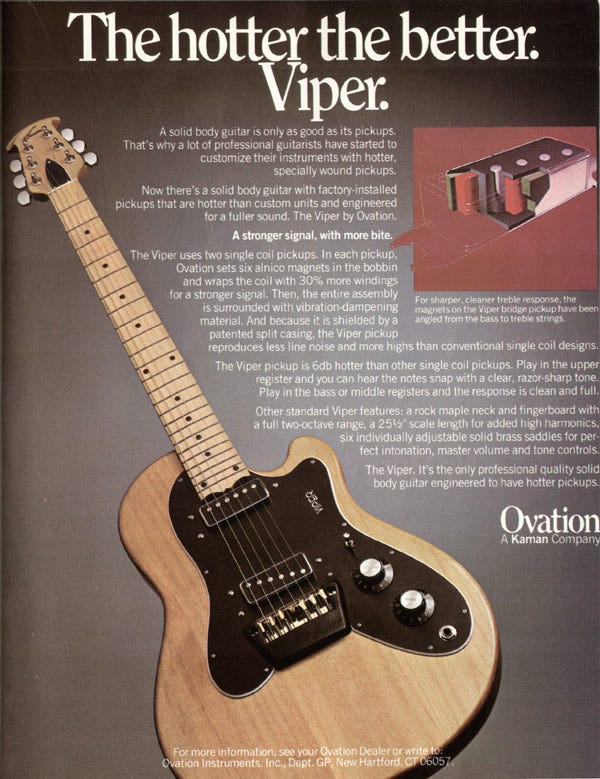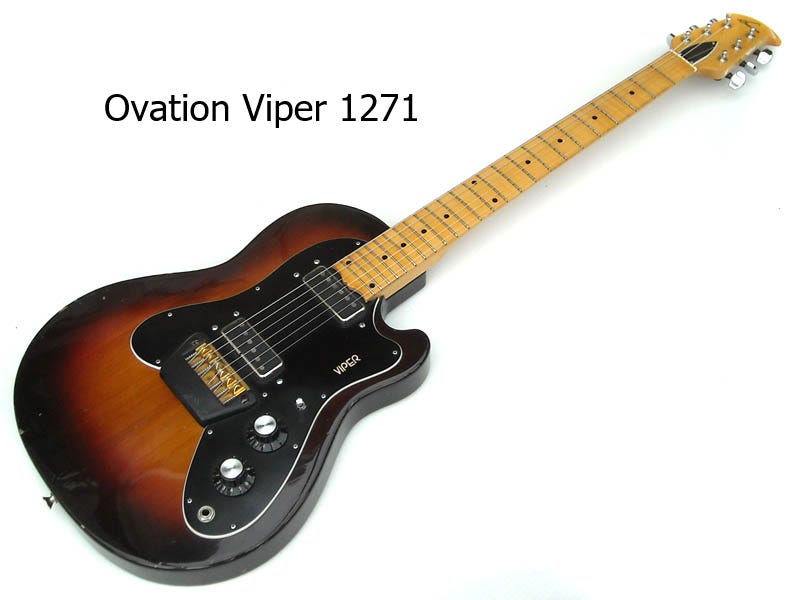Guitar Gavel “Lick Of The Week” with Ian Cowan
Smooth blues jazz, a lot of licks in one lick.
Sometimes it’s best to stick to what you know. If that was unequivocally true, Kaman Aircraft would have stayed in the aerospace industry. However, the founder of the company, Charles Kaman, was a serious guitar player and even turned down an offer to play professionally for Tommy Dorsey (as a younger man).
Making his fortunes in the helicopter business and other defense related industries Charles Kaman just couldn’t shake his guitar ambitions. Looking to diversify and having “a little” spending money led to two unsuccessful attempts to buy C.F. Martin in the early 1960s.
Followed by an unsuccessful attempt to buy Harmony.
If you can’t buy them, join them. So Charles started Kaman Music Corporation in 1965 and went to work building his own guitar company. Using his personal knowledge, design input from jazz guitarist Charlie Byrd and a team of engineers, Ovation delivered the first fiberglass (Lyrachord) guitar, the Balladeer in 1968.
Ovation acoustics were quickly met with great success thanks to an endorsement deal (1969) with Glen Campbell and his high profile CBS TV show, “The Glen Campbell Goodtime Hour”. Glen went on to help the company develop their acoustic piezo pickup and played Ovation’s first electric-acoustic prototype on TV in 1972.
Being on CBS, why he wasn’t forced to play a Fender I’ll never know :-)??
Swinging hard out of the gates, Ovation entered the electric guitar market with their Storm series in 1968; Thunderhead, Typhoon, Tornado, Eclipse, & Hurricane. They were all Gibson-esque hollow body guitars of the same shape the Typhoon bass. Kaman focused all the R&D effort on the acoustic models so the electric bodies were sourced from Hofner of Germany and assembled in Connecticut. The Thunderhead was the premier guitar of the line-up and Campbell graced a custom Thunderhead on his show along with one of his regular guests, Jerry Reed.
Most of the Thunderhead’s were equipped with gold hardware and DeArmond pickups, but Ovation also offered a stripped down version.
1968 Ovation Thunderhead specs: Spruce top, maple back and sides, Maple neck, Ebony or Brazilian fretboard, DeArmond pickups, Master volume, two tone controls, Pickup blend control, Phase switch
In the video below, Campbell melts a Thunderhead while playing “Back Home In Indiana”.
Battling bad weather, sales of their new electric guitars were underwhelming and Ovation pivoted to solid body electrics in 1972 introducing two models, the Deacon and budget friendly Breadwinner. They were designed to look like a battle axe, but the far-out design is very strategic and the ergonomic shape provides multiple positions to play while sitting. The first couple of years the models came with two oversized single coils, but those were swapped for double 12-pole Ovation humbuckers in 1975.
Beyond the wild looks, the guitars also sported an active electronic system powered by two 9-volt batteries. Known as Ovation’s field-effect transistor (FET) preamp, it was arguably the first active electronics in the industry. Campbell also rocked a Deacon on TV and Ace Frehley recorded much of KISS’ first album playing a Breadwinner.
1975 Ovation Deacon specs: Mahogany body & neck, Ebony fretboard with diamond inlays, Master volume & tone controls, 3-way switch, 2-way active mid range selector
A few years later here comes the Viper. An egghead single cutaway body offered with either two or three Ovation high output single coils.
Advertised as being 6db hotter than any other single coil on the market the pickups had “30% more windings for a stronger signal” (10,000 winds). They are known for being exceptionally bright. It also sounds to me like engineers overran the marketing department :-).
A couple of features leading to the crisp tone are a silicone rubber housing surrounding each pickup and an extra capacitor between the volume control and output jack. No matter how hard Ovation tried their electric guitars never took-off, but the Viper managed to hang around until 1982. Given their lack of popularity, not lack of quality, they can still be found for a decent price.
Ovation Viper specs: Maple body and neck, Maple or ebony fretboard, Ovation single coils, One volume and tone control, 3-way switch


